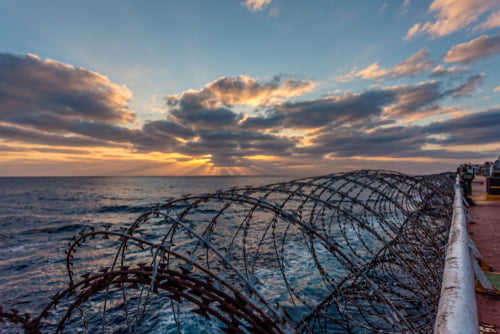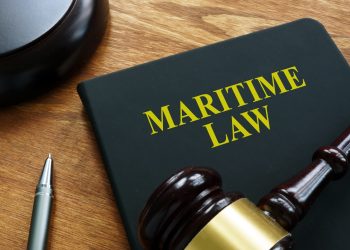Two Somali pirates were sentenced to 30 years in prison for hostage taking, terrorism, and firearms offenses, in connection with the 977-day hostage taking of an American journalist in Somalia.
In a press release on Tuesday, the Department of Justice (DOJ) stated that a jury in the Eastern District of New York convicted the two men of those offenses in February 2023 following a three-week trial. According to reports, the men were scheduled to be sentenced on 6 September.
In addition to the prison term, the two men were sentenced to one day of supervised release.
According to the complaints, indictments, evidence at trial, and statements made in public court proceedings, in January 2012, Michael Scott Moore, an American freelance journalist, traveled to Somalia to research piracy and the Somali economy.
What happened in 2012?
On 21 January 2012, Moore was driving in the vicinity of Galkayo, Somalia, when his vehicle was suddenly surrounded by a group of heavily armed men carrying assault rifles and rocket-propelled grenade launchers.
The men pulled Moore from his vehicle, beat him with their weapons, and drove him away in another vehicle to a secluded area, where they held him with two Seychellois fishermen (Fisherman-1 and Fisherman-2). The fishermen had been abducted off the Somali coast in October 2011. Moore was held in various locations in the vicinity of Hobyo, Somalia, for approximately three months.
In April 2012, Moore and Fisherman-1 were transferred to a boat, F/V Naham III, which had previously been hijacked in March 2012. The pirates kept Moore and Fisherman-1 captive aboard the Naham III, along with 28 crew members of the ship. Moore learned from the crew members, who were from Vietnam, China, Philippines, and Taiwan, that the hostage takers murdered the captain of the ship when they captured the vessel and that his body was kept in the ship’s freezer.
Moreover, the hostage takers kept Moore on the Naham III until approximately August 2012, when they transferred him back to land. On one occasion, in approximately May 2012, Moore’s captors took him from the Naham III to the Somali bush, where they forced Moore to watch as they hung Fisherman-1 from a tree by his feet and beat Fisherman-1 with a cane. During the torture of Fisherman-1, the pirates who were present were armed with heavy weaponry, including machine guns and grenade launchers.
Moore remained a hostage for another two years. During this time, his captors shuttled him between safehouses, chained him at night to prevent his escape, surrounded him with armed guards, and repeatedly threatened him with bodily harm. Moore was also forced to make several proof-of-life videos requesting large ransom payments for his release.
The kidnappers provided Moore with almost no information, and his access to the outside world was limited to a radio. In September 2014, following the payment of a ransom, Moore’s captors released him.
The two convicted men each played significant roles in Moore’s captivity. One was a naturalized U.S. citizen and served as the Minister of the Interior (a role that made him responsible for police and security forces) in Galmudug province in Somalia, where Moore was held hostage.
Furthermore, he served as an overall leader of the pirates and headed their efforts to extort a massive ransom from Moore’s aging mother. Among other things, he directed the production of proof-of-life videos with Moore, participated in negotiations for ransom payments, and used his own home as a base of operations for the pirates.
The other man was a serving officer in the Somali army, and a supervisor of the pirates guarding Moore during the early stages of the hostage taking. After Moore had been moved several times, he continued to play an essential role in the hostage taking, relying on his military position, training, and experience to serve as the pirates’ head of security and armorer.
As head of security, he was in charge of moving Moore from location to location around Somalia. He also leveraged his military background to provide and repair heavy machine guns, grenade launchers, and other weapons that the pirates used to ensure that Moore could not escape.

































































